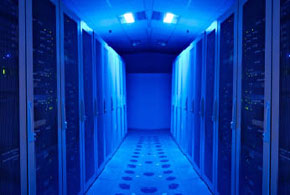By Kent Weaver and Jim Gallagher
Organizations planning to make a bold digital splash in 2015 are also likely to need another upgrade: their data centers. As new technologies enter the marketplace, many enterprises are planning—and budgeting—for the next big thing.
However, data center migrations are, in many ways, both easier and more complex than ever. Technologies such as virtualization may eliminate the need for moving physical equipment, but the vast array of other options, such as hybrid and cloud solutions, make the process inherently more complex than it was before.
Virtualization alone now accounts for more than 50 percent of all server workloads, according to Gartner, and it’s expected to reach 86 percent by 2016. Data center infrastructure is now the second most significant IT investment, reports the “2015 SIM IT Trends Study.” Cloud computing is now the fifth largest expense, up from the 17th largest investment in 2009.
The rules for moving assets have changed and differ from those that prevailed 10 years ago.
Whether an organization needs increased resiliency or uptime, physical power and cooling upgrades, or is going through a merger or acquisition, IT decision-makers need to understand the options and migration methodologies that exist today.
Going Beyond the Physical
It’s time to think less about the hardware and more about digital options as new technologies and options emerge. While there are just as many moving parts to keep track of as there were10 years ago, much has changed.
Data center migrations in the past focused on fitting everything neatly into a space with enough room for a certain amount of growth for the business at that time. When the business outgrew that space—or its power and cooling capabilities—IT looked for a larger space.
However, moving old equipment into a larger facility with greater capacity, expanded the data center’s lifespan only for a limited time. In addition, new technology emerged that decreased space requirements but increased power and cooling needs. Despite these changes, the focus was still on the physical hardware and the data center floor space, power and cooling required to support it.
In contrast, a modern, hybrid data center model can operate applications and access data among a number of locations, from public and enterprise cloud services to software as a service (SaaS), and even private cloud infrastructure, virtualized environments and legacy systems. Some or all of these may be housed on-site, in managed hosting facilities or in co-location facilities.
Where the infrastructure lives is now less important than the performance and services provided. This fundamentally changes the way data center migration is handled.
Laying the Groundwork
How will you know what you are migrating if you don’t have a detailed map? The first step of any data center migration should require a detailed asset analysis and application mapping of the existing environment, including what each component does from a business functionality standpoint. Which are mission-critical? Which are interdependent?
You also need to determine how downtime will affect each application, and what the IT organization can do to minimize its impact. For example, if you are a retailer with 24-hour online shopping and shipping, you should develop a plan to make sure any downtime affects the least number of shoppers.
Assessing Knowledge and Resources
The average age of a data center facility is 18 years. Even if the company’s last data center migration was relatively recent, the chances of having an expert on staff who understands all of today’s options—and which are best for the organization—are slim.









